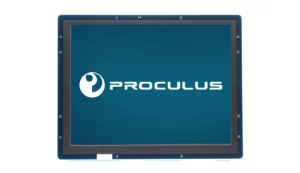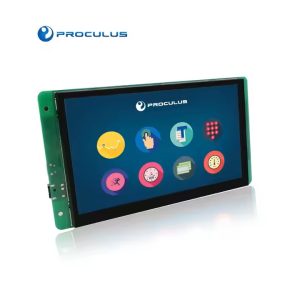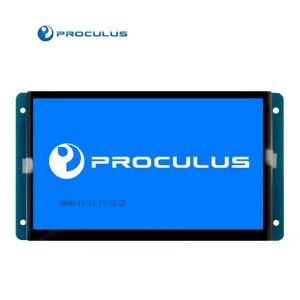A Comprehensive Guide to USB Interface: Exploring Different Generations

USB (Universal Serial Bus) is a standard digital data interface that acts as a bridge, connecting computers to peripheral devices. Since its introduction, USB has evolved rapidly, with each generation bringing advancements in data transfer speed and power output.
USB has become one of the most popular ports for various sensors and devices, not only in commercial applications but also in industrial settings.
Different Types of USB Ports and Connectors
USB ports and connectors serve as the physical bridge between computers and peripheral devices. They act as communication pathways within devices, providing both power and data transmission. There are several types of USB ports and connectors, including:
· Type-A and Type-B: These were the first types of USB ports, later followed by mini and micro versions of each.
· Micro-B SuperSpeed: An updated version of the micro-B connector that supports higher data transfer speeds.
· USB Type-C: The latest USB connector, which offers faster transfer speeds and the ability to deliver more power.

How Many Versions of USB Generations Are There?
USB has undergone several generations of advancements since its inception. Let’s take a closer look at each generation:
USB 1.0 and 1.1
USB 1.0 was introduced in January 1996, followed by USB 1.1 in September 1998. These versions had a maximum speed of up to 12 Mbps and were primarily designed to connect simple devices like mice and keyboards to computers. USB 1.1 addressed some limitations of USB 1.0 and initiated the universal adoption of USB as a data interface.
USB 2.0
USB 2.0, released in April 2000, offered increased speed with a maximum transfer rate of up to 480 Mbps. It was approximately 40 times faster than USB 1.1 and became backward-compatible, allowing users to connect older USB devices to newly adopted USB 2.0 computers and vice versa. USB 2.0 also improved power delivery, supporting a maximum of 500mA current.
USB 3.2 Gen 1 (SuperSpeed USB 5Gbps)
With the advancement of IoT devices, USB 3.2 Gen 1, also known as SuperSpeed USB 5Gbps, was introduced to meet the growing bandwidth demand. It offers up to 5 Gbps of data transfer speed and features full-duplex mode, allowing simultaneous data transfer and reception between connected devices.
USB 3.2 Gen 2 (SuperSpeed USB 10Gbps)
USB 3.2 Gen 2, also known as SuperSpeed USB 10Gbps, provides up to 10 Gbps of data transfer speed. This version doubled the maximum transfer rate of USB 3.2 Gen 1, making it ideal for storage and display applications. USB 3.2 Gen 2 also supports USB Power Delivery (USB PD), offering up to 20V of power at 5A for a potential of 100 watts through supported hardware.
USB 3.2 Gen 2×2 and USB 4 (USB Type-C)
USB 3.2 Gen 2×2, released in August 2017, offers up to 20 Gbps of data transfer speed, also known as SuperSpeed USB 20Gbps. This version made significant updates to the USB Type-C connector, including support for reverse insertion.
USB 4, the latest generation, provides a lightning-fast 40 Gbps transfer speed and is only available through USB Type-C connections. USB4 Version 2, officially launched in October 2022, offers even faster transfer speeds, reaching up to 80 Gbps and potentially up to 120 Gbps in one direction and 40 Gbps in the opposite direction when configured asymmetrically.
The Importance of USB in Industrial Applications
USB’s blazing-fast digital data interface and hot-swappable connections make it a crucial component in industrial applications. USB provides a reliable interface between industrial computers and peripheral devices, enabling data analysis, monitoring, data collection, and acquisitions.
USB’s backward compatibility, hot-swappability, power capabilities, and expandability make it an ideal choice for various industrial applications. Here are some of the key advantages of USB in industrial settings:
Backward Compatibility
All USB versions are backward compatible, meaning that devices with different USB generations can still connect as long as they have the same standard ports. This backward compatibility reduces the need for constant upgrades and lowers the total cost of ownership for industrial applications.
Hot-Swappability
USB’s hot-swappable feature allows for the replacement or upgrade of devices without shutting down or rebooting the system. This feature is particularly important in industrial applications where continuous operation is essential.
Power Capabilities
USB versions can power devices without requiring additional power supplies. This eliminates the need for separate power cables, making the entire system more portable and reducing additional cabling costs.
Expandability
A single USB slot can connect multiple devices through the use of USB hubs. This expandability enables industrial computers to connect up to 127 different devices, providing flexibility in industrial setups. However, connecting numerous devices may reduce the data transfer rate due to bandwidth partitioning.
USB Interface in Industrial Applications
USB has found wide usage in industrial applications, serving as a reliable link between industrial machinery, controllers, sensors, and computers. USB facilitates the transfer of raw data from sensors to computers for analysis and acquisition. Here are some industrial applications that benefit from USB interface connections:
Production Line
USB’s ability to power and transfer data from cameras and sensors makes it an invaluable asset in production line setups. USB interfaces simplify the infrastructure requirements of production lines, enabling seamless communication between devices.
Robot Automation
In robot automation, USB interfaces enable the transfer of data between computers and robots. This data exchange allows computers to make predictions and send actionable commands to the robots, enhancing automation capabilities.
City and Surveillance
USB connections are crucial for city surveillance systems, where computers need to connect to various cameras and sensors located throughout the city. USB interfaces facilitate real-time monitoring and data collection for enhanced security.
Agricultural Monitoring
USB interfaces play a significant role in agricultural monitoring, ensuring optimal conditions for plants. By connecting computers to sensors and switches, USB enables specific actions to be taken when necessary, ensuring the well-being of crops.
Kiosk and Vending Management
In kiosk and vending management systems, USB interfaces connect gateways and computers to various peripheral devices such as cameras, printers, NFC/RFID devices, and input keyboards. USB interfaces facilitate seamless communication and efficient management of these systems.

Our Products with USB Interfaces
The standard version of our industrial-grade Android LCD module is equipped with several USB ports to meet the needs of our customers in different industry applications.
Meanwhile, if you wish to change the interface settings, increase or decrease some interfaces, or have other special requirements, you are welcome to contact us. We are good at providing high quality and reliable customisation service on hardware interfaces for different customers’ needs.


 English
English


